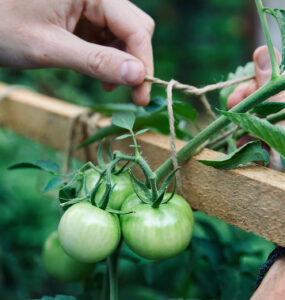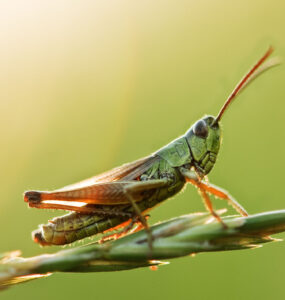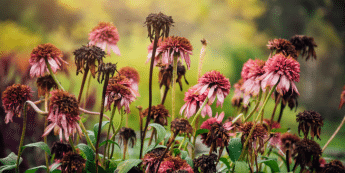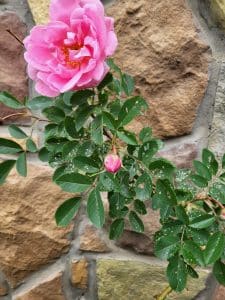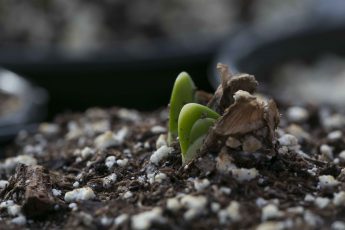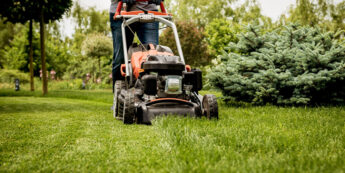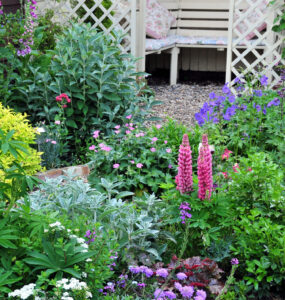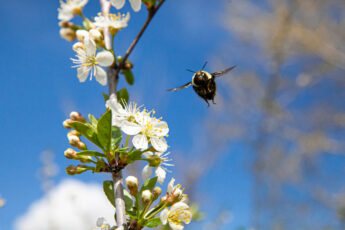What’s Eating my Spruce Tree: Budworm and Sawfly
by Rob Sproule
If the tops of your spruce trees are brown and bare, chances are a hungry critter is munching on the succulent new growth. Lucky us, we have 2 different pests that could be ravaging our conifers. They aren’t related to each other, but while there are subtle differences to the damage they deal, you kill them both the same way.
Spruce Budworm
The spruce budworm has been a destructive fixture in North American forests for hundreds of years. A pervasive threat to commercial forestry, they have become a significant pest in backyards across the continent.
Albertans are afflicted with the Eastern budworm (Choristoneura fumiferana), while its Western cousin plagues the Rockies to the Pacific. Its favourite foods are black and white spruce and balsam fir, though in yards it goes for the spruce first.
Life Cycle
After mating in the summer, the female moths lay their eggs ““ usually about 150 – on the undersides of spruce needles. The emerging larvae spin silken cocoons and huddle in the tree’s nooks and crannies, dreaming of the darling buds of May.
If you trees are afflicted, the webbing will be visible by the end of May. Look for it around needles and shoots, especially in tree tops. If you have mature conifers, you may need binoculars to check.
The hungry hungry caterpillars emerge in late May/ early June. They gorge on year-old needles, fresh buds, and tender new growth first and only, grudgingly, eat mature needles once it’s gone. They feast for 40 days before pupating, and the combination of appetite duration and preferred food makes them very destructive.
If you have a keen eye, you can spot budworm eggs on the undersides of needles in the fall; they look like drops of spittle. These can easily be washed off with a hose.
In the spring, you can either spot the webbing or look for the caterpillars, which are a tan brown with markings across their bodies. The adult moths that emerge in late summer are a dark, mottled brown.
Getting rid of them
Getting budworm off small conifers is a straight forward process of either blasting the eggs/ webbing/ caterpillars off with a high-pressure hose or, as a last resort, applying a pyrethrum based spray.
With infestations on mature trees, height quickly complicates things. They usually afflict the tree tops, so you will need to get the high pressure spray up high. If all else fails, pyrethrum or even malathion will work on the caterpillars, but both are contact sprays and need to touch the critter to kill. Please don’t spray on windy days.
The best prevention, besides keeping neighbouring trees clean, is keeping your spruce trees healthy enough to fight them off. Plant them in the best spots possible and fertilize them regularly.
Yellow-Headed Spruce Sawfly
We often confuse Yellow-Headed Spruce Sawfly (Pikomena alaskensis) with Spruce budworm, but while they both attack new spring growth, they have more differences than similarities. While budworms are moths that over-winter enmeshed in webbing in the trees, sawflys are stingless wasps that overwinter in the ground.
Like budworms, sawfly damage becomes evident in late May or early June. They tend to attack treetops, but while budworm leave some remnants of needles behind, sawfly strips everything away. While budworm will strike every tree in a group, sawfly will strike a few but rarely all.
Sawfly worms are distinctive with a light green body and yellowish brown head. Treatment for them is the same as budworm, only you won’t be able to attack the eggs or webbing as sawfly over-winter in the ground.
Chemical treatment (pyrethrum or malathion), is most effective when sawfly are just starting to feed. This tends to be about 10 days after the brown bud caps have fallen off the tree.


